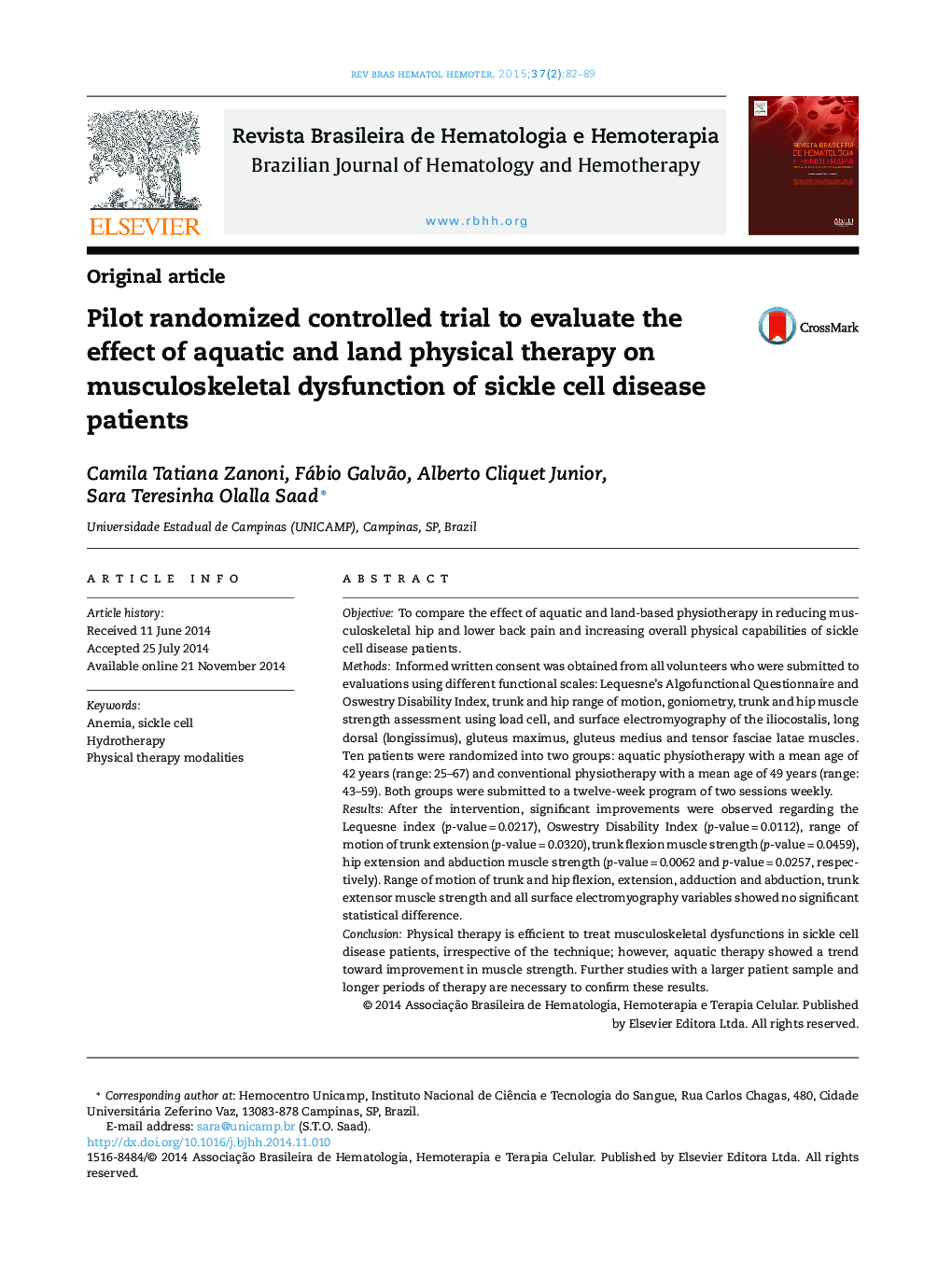| Article ID | Journal | Published Year | Pages | File Type |
|---|---|---|---|---|
| 3332962 | Revista Brasileira de Hematologia e Hemoterapia | 2015 | 8 Pages |
ObjectiveTo compare the effect of aquatic and land-based physiotherapy in reducing musculoskeletal hip and lower back pain and increasing overall physical capabilities of sickle cell disease patients.MethodsInformed written consent was obtained from all volunteers who were submitted to evaluations using different functional scales: Lequesne's Algofunctional Questionnaire and Oswestry Disability Index, trunk and hip range of motion, goniometry, trunk and hip muscle strength assessment using load cell, and surface electromyography of the iliocostalis, long dorsal (longissimus), gluteus maximus, gluteus medius and tensor fasciae latae muscles. Ten patients were randomized into two groups: aquatic physiotherapy with a mean age of 42 years (range: 25–67) and conventional physiotherapy with a mean age of 49 years (range: 43–59). Both groups were submitted to a twelve-week program of two sessions weekly.ResultsAfter the intervention, significant improvements were observed regarding the Lequesne index (p-value = 0.0217), Oswestry Disability Index (p-value = 0.0112), range of motion of trunk extension (p-value = 0.0320), trunk flexion muscle strength (p-value = 0.0459), hip extension and abduction muscle strength (p-value = 0.0062 and p-value = 0.0257, respectively). Range of motion of trunk and hip flexion, extension, adduction and abduction, trunk extensor muscle strength and all surface electromyography variables showed no significant statistical difference.ConclusionPhysical therapy is efficient to treat musculoskeletal dysfunctions in sickle cell disease patients, irrespective of the technique; however, aquatic therapy showed a trend toward improvement in muscle strength. Further studies with a larger patient sample and longer periods of therapy are necessary to confirm these results.
